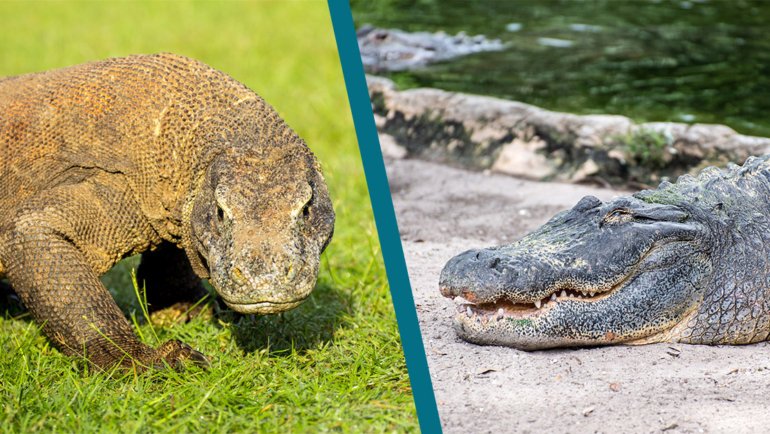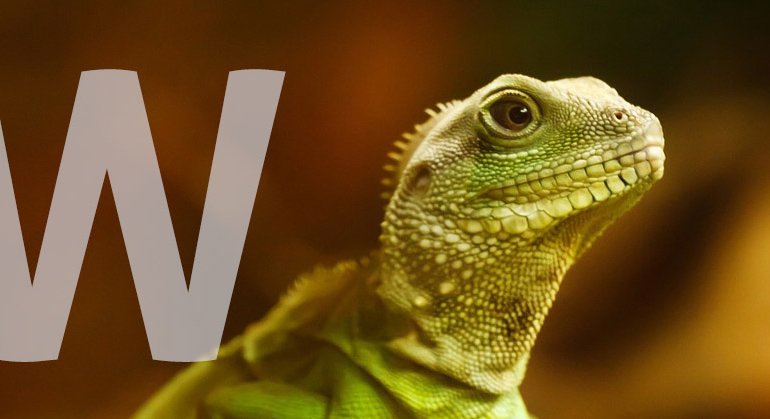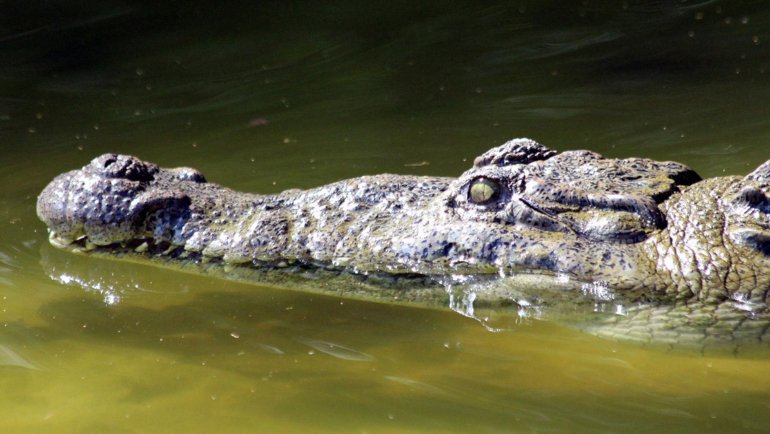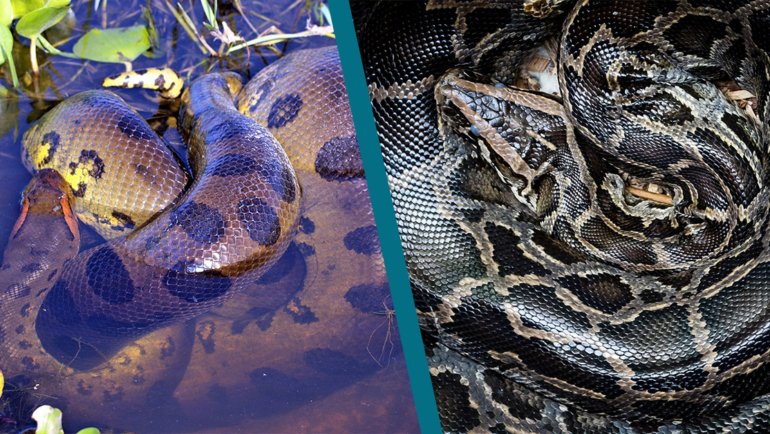In the annals of nature’s most captivating predators, few can rival the allure of the King Cobra and the Anaconda. These snakes, each impressive in their own right, hail from different corners of the world and have inspired countless myths, legends, and debates.
From the steamy jungles of Southeast Asia to the dense rainforests of South America, these apex predators have long been subjects of both fear and fascination.
This article dives deep into their world, comparing their lifestyles, attributes, and behaviors, all while aiming to uncover the truth behind some of the most popular debates concerning these two giants.
The King Cobra – An Overview
The King Cobra, with its regal name and stature, is primarily found in the forests of Southeast Asia. Scientifically known as Ophiophagus hannah, it is the world’s longest venomous snake, with adults typically reaching lengths of around 3.7 meters (12 feet).
Some records even suggest individuals growing up to 5.7 meters (18.8 feet). Their distinctive hood, which they flare when threatened or agitated, combined with a deep and resonant hiss, makes them one of the most iconic snakes in the world.
Primarily feeding on other snakes, the King Cobra has earned its royal title. This snake-eating (ophiophagous) diet is unique among cobras and emphasizes its dominance in its natural habitat. When it’s not hunting, the King Cobra is known for its preference for solitude, rarely crossing paths with humans. However, when it does, its venom—a potent cocktail of neurotoxins—can be fatal.
Notably, the King Cobra displays advanced nesting behavior. Females meticulously construct nests using fallen leaves and stay with their eggs, guarding them against potential threats—a rare and endearing trait among snakes.
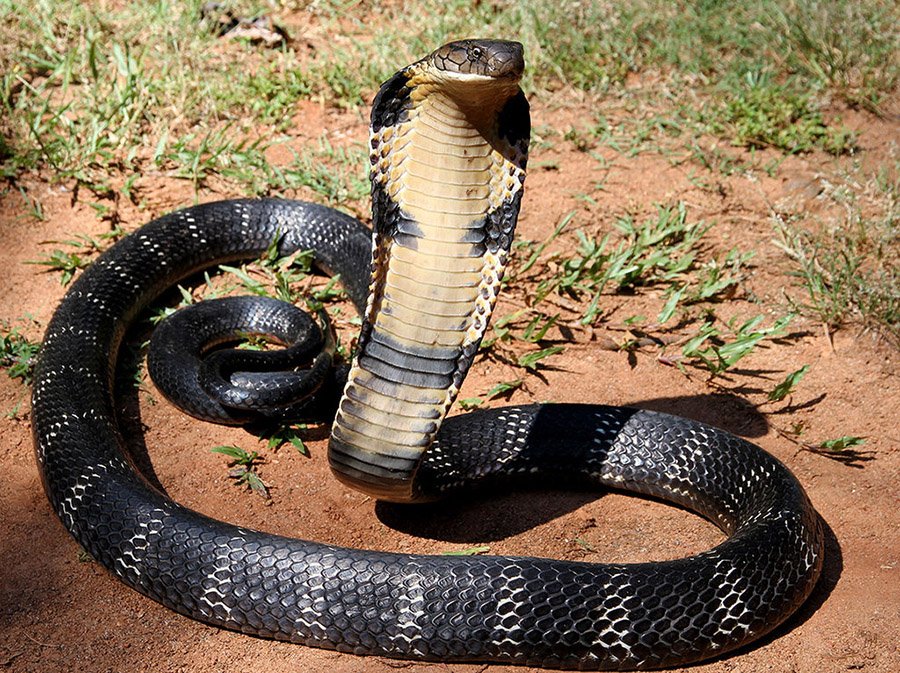 Source: Wikimedia Commons
Source: Wikimedia CommonsThe Anaconda – An Overview
The Anaconda, primarily the Green Anaconda (Eunectes murinus), is the behemoth of the snake world. While not the longest, it claims the title of the heaviest and most massive snake.
Native to the murky waters and dense rainforests of South America, particularly the Amazon and Orinoco river basins, it can grow up to lengths of 9 meters (29.5 feet) and weigh as much as 227 kilograms (500 pounds). Their thick, muscular bodies are covered in olive-green patterned skin, enabling them to camouflage seamlessly in their watery habitats.
Anacondas are semi-aquatic constrictors. Their nostrils and eyes are positioned high on their heads, allowing them to lurk almost entirely submerged, waiting to ambush unsuspecting prey. While their diet primarily consists of medium-sized mammals and birds, large anacondas are capable of taking down larger prey, including deer and caimans.
Unlike the venomous bite of the King Cobra, anacondas employ constriction as their means of subduing prey. They coil around their victim, applying immense pressure to incapacitate and eventually cause circulatory arrest.
The reproductive behavior of the anaconda is particularly fascinating. Female anacondas release pheromones to attract males. During the mating season, multiple males can coil around a single female, forming a “breeding ball” that can last for several weeks. Interestingly, anacondas give birth to live young—a rarity among snakes—rather than laying eggs.
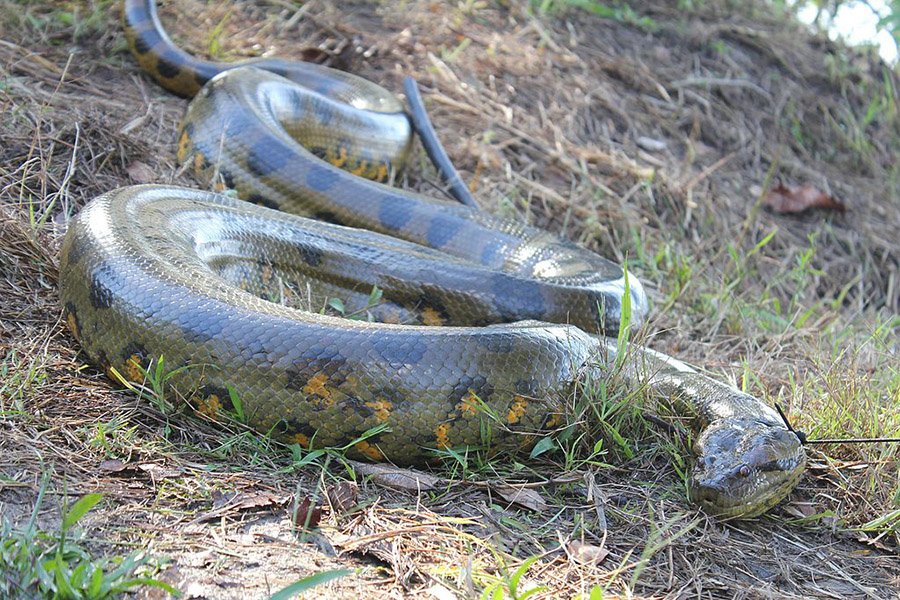 Source: Wikimedia Commons
Source: Wikimedia CommonsDistribution and Habitat
King Cobra: These majestic serpents thrive in the tropical rainforests, bamboo thickets, and mangrove swamps of Southeast Asia, with populations extending from India through to Southeast China and Indonesia. Their preference for regions with numerous streams and lakes allows them to stay close to water sources—a critical aspect considering their primary diet of snakes.
Anaconda: The dense rainforests of South America are the primary home to anacondas. They are particularly abundant in the Amazon and Orinoco river basins, flourishing in swamps, marshes, and slow-moving rivers. Their semi-aquatic nature means they spend a significant amount of time in water, which aids in both hunting and evasion from potential threats.
Despite being giants of the snake world, the natural habitats of the King Cobra and Anaconda are starkly different. While the King Cobra’s terrain is characterized by tropical forests with an interconnected network of water bodies, the Anaconda thrives in environments with large, stagnant, or slow-moving water bodies, intertwined with dense vegetation.
Venom vs. Constriction: Killing Techniques
King Cobra
Known for its daunting size and fearsome hiss, the King Cobra is a snake that commands respect, not just for its length but for its potent venom. This venom isn’t just a means of self-defense; it’s a primary tool for hunting. Once the King Cobra sets its sights on a target, usually another snake, it strikes quickly, injecting a cocktail of neurotoxins.
These toxins act on the nervous system, leading to paralysis and death of its prey. Despite the potency of its venom, the King Cobra doesn’t immediately rely on it to do all the work. After delivering its venomous bite, it often tracks its prey, waiting for the venom to take effect before consuming it.
Anaconda
In stark contrast, the anaconda doesn’t possess venomous fangs. Instead, it relies on its sheer strength and size. An anaconda ambushes its prey, lunging swiftly from its aquatic hideout or from a coiled position on land.
Once it grabs hold, it wraps its muscular coils around the prey, squeezing tighter with each exhale until the prey can no longer breathe, leading to suffocation. This method of hunting, known as constriction, is not only effective but also ensures minimal risk to the anaconda during the hunt.
While both these methods are deadly efficient in their own right, they showcase the remarkable diversity in the snake world’s hunting techniques. One relies on biochemical warfare, while the other depends on brute physical strength.
What Do King Cobras and Anacondas Eat?
King Cobra
As the world’s largest venomous snake, one might assume the King Cobra has a wide-ranging diet, but its preference is quite specialized. This snake is an ophiophagous predator, meaning it primarily preys on other snakes.
Favorites include rat snakes, pythons, and even other venomous snakes like kraits. Occasionally, they may also feed on small mammals and birds. Their keen sense of smell helps them track down snake trails, and once they find their prey, their potent venom ensures a quick meal.
Anaconda
The dietary habits of an anaconda are as impressive as its size. Being opportunistic hunters, anacondas feed on a variety of prey, depending on their own size. Younger anacondas might prey on smaller birds, rodents, and amphibians. However, as they grow, so does the size of their prey. Large anacondas have been known to consume deer, caimans, capybaras, and even jaguars.
Their ability to unhinge their jaw enables them to swallow prey much larger than the width of their head. The anaconda’s preference for water means many of its hunts occur there, using the water as a means to help subdue and drown its victims.
Behavior and Lifestyle
King Cobra
A symbol of majesty and terror in many cultures, the King Cobra is an elusive, primarily solitary creature. Preferring the dense undergrowth of forests, this snake roams its territory in search of prey, usually other snakes. It’s not just a feared predator but also showcases remarkable nurturing instincts.
Unique among snakes, the female King Cobra builds a nest for her eggs, using leaves and other debris. She guards this nest fiercely, ensuring the safety of her offspring until they hatch, after which she leaves the young ones to fend for themselves.
During mating, males can often be seen engaging in “dance-like” combats, trying to pin each other’s head to the ground to win over a female.
Anaconda
The Green Anaconda, the most well-known of the anaconda species, is at home in the waters of the Amazon. This semi-aquatic snake is often seen lazily draped over branches in shallow waters or lurking just below the surface, waiting for an unsuspecting prey to get close.
When it comes to reproduction, anacondas employ a fascinating method. Females release a pheromone trail in the water to attract males. When multiple males locate a single female, they may form a breeding ball, with several snakes intertwining for the chance to mate with her.
Being ovoviviparous, anacondas give birth to live young, which are independent from birth, ready to swim and hunt.
Defensive Mechanisms
King Cobra: More than just a striking display, the King Cobra’s hood is an integral part of its defensive strategy. When threatened, it raises up to a third of its body off the ground, spreading its iconic hood to make itself appear larger and more intimidating.
Accompanied by a deep, resonant hiss that mimics the growl of a big cat, this display is usually enough to give most predators pause. If the display doesn’t work, the King Cobra is quick to strike, using its potent venom as both a hunting tool and a defense mechanism.
Anaconda: Unlike many snakes, anacondas rely heavily on their natural camouflage and massive size for defense. Their greenish-brown, patterned scales blend seamlessly with murky waters and dense vegetation, allowing them to lie in wait undetected.
If confronted or cornered, an anaconda’s first instinct might be to retreat. However, if threatened, it can deliver a powerful bite, using its sharp teeth to grip the aggressor. Their sheer size and strength mean they have few natural predators once they reach adulthood.
Threats and Conservation Status
King Cobra
The King Cobra is currently listed as “Vulnerable” on the IUCN Red List. The main threats to its survival include habitat destruction due to deforestation, direct persecution from humans out of fear, and illegal wildlife trade. This revered snake holds significant cultural value in many parts of its range, sometimes leading to over-exploitation for medicinal purposes and snake shows.
Efforts to conserve the King Cobra include awareness campaigns, protecting its natural habitat, and research into its ecology and behavior. Some regions have established snake rescue centers that rehabilitate and release captured or injured King Cobras back into the wild.
Anaconda
While anacondas are not currently endangered, they face threats from habitat loss, pollution of their aquatic habitats, and hunting. Their impressive size makes them targets for the illegal pet trade and trophy hunting.
Conservation efforts for the anaconda include establishing protected habitats, enforcing stricter regulations on hunting and trading, and raising awareness about the ecological importance of this giant snake.
King Cobra vs. Anaconda: Who Would Win in a Fight?
In a hypothetical confrontation between a King Cobra and an Anaconda, several factors would come into play. The anaconda, with its immense size and strength, would certainly have the advantage in water or a closed space. It could use its power to constrict and suffocate the cobra before it got a chance to bite.
However, the King Cobra’s venom is potent enough to take down an elephant. If the cobra got a clean bite on the anaconda, it could potentially inject venom and cause significant harm or even death, depending on the bite’s location and the amount of venom delivered.
In open spaces, the King Cobra’s agility and speed might give it an edge, allowing it to strike and retreat quickly. The habitat in which this hypothetical battle takes place would also play a crucial role in determining the outcome.
Frequently Asked Questions
Are King Cobras and Anacondas natural enemies?
No, these two snakes inhabit different continents and ecosystems. They would not naturally encounter each other in the wild.
Which snake is more dangerous to humans?
Both snakes can be dangerous if threatened. While anacondas can deliver a powerful bite and constrict, King Cobras have a potent venom that can be lethal to humans.
Can a King Cobra’s venom kill an Anaconda?
In theory, the venom can harm or even kill an anaconda, depending on the bite’s location, venom quantity, and the anaconda’s size. However, such an interaction is purely hypothetical and hasn’t been documented.
Learn More About Anacondas
- Anaconda: Characteristics, Diet, Facts & More [Fact Sheet]
- How Fast Are Anacondas? How Do They Compare With Other Snakes?
- Can Anacondas Swim? Are They Good Swimmers?
- Anaconda vs. Boa Constrictor: A Detailed Comparison
- How Long Do Anacondas Live? Anaconda Lifespan and Life Cycle Explained
- Are Anacondas Dangerous? Do They Attack Humans?
- 25 Super Interesting Facts About Anacondas
- Titanoboa vs. Anaconda: A Comparison of the Colossal Serpents
